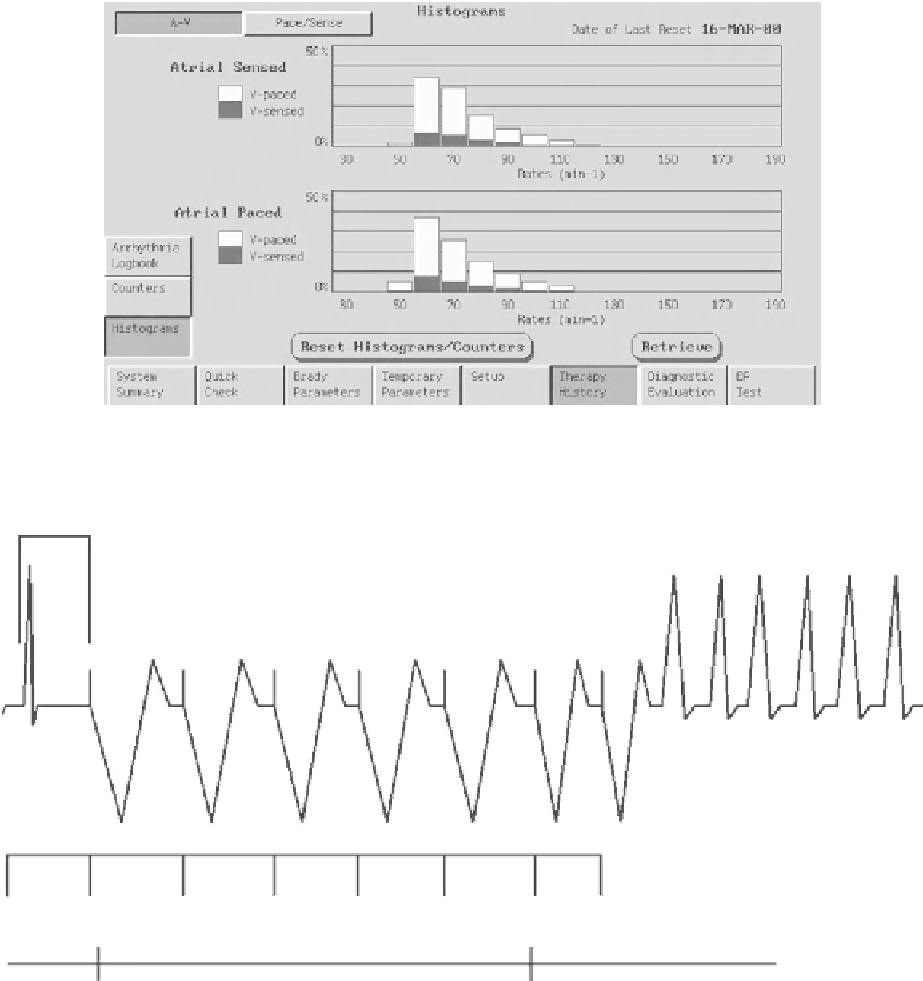Biomedical Engineering Reference
In-Depth Information
Fig. 8.12
Histograms screen view [32] (© 2012 Boston Scientific Corporation or its affiliates. All rights reserved. Used with permission of
Boston Scienti fi c Corporation)
Coupling interval
S3
S2
S1
S1
S1
S1
S1
Drive pulses
Premature pulses
Fig. 8.13
Electrophysiologic pacing impulses [ 32 ] (© 2012 Boston Scientifi c Corporation or its affi liates. All rights reserved. Used with permis-
sion of Boston Scientifi c Corporation)
to be delivered. These pulses may be delivered to the atrium
or the ventricle. In dual-chamber modes, the choice of a heart
chamber is nominally set to the atrium. If the ventricle was
selected, life-threatening ventricular arrhythmias might be
induced. During atrial pacing, if ventricular pacing is acti-
vated in the permanently programmed normal bradycardia
therapy mode, back-up pacing in the VVI mode is available.
The parameters of the back-up VVI pacing may also be pro-
grammable independently from the permanent parameters.
Programmed electrical stimulation allows the pacemaker to
deliver a series of equally timed pacing pulses (S1) followed
by premature pacing pulses (S2-Sx) to induce or terminate
arrhythmia. Drive pulses (or S1 pulses) serve for pacing and
cardiac rhythm management at a rate slightly higher than the
intrinsic action. All pulses are delivered in the V00 or A00
mode (depending on the selected chamber), with programmed
parameters of the pulse width and amplitude (Fig.
8.13
).
Burst protocol allows a manual asynchronous burst in the
selected chamber to be set, with an optional delay period
with or without a pacing pulse and optional asynchronous
back-up ventricular pacing during atrial pacing. In dual-
chamber pacemakers, back-up pacing in the V00 mode is
available. Otherwise, the ventricular pacing is turned off dur-
ing atrial pacing and the inhibited delay period. The initial

